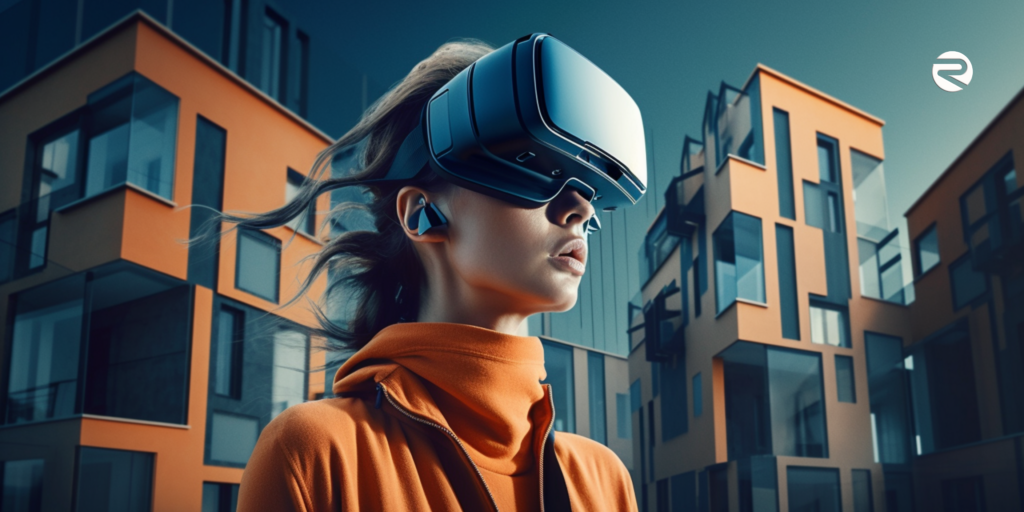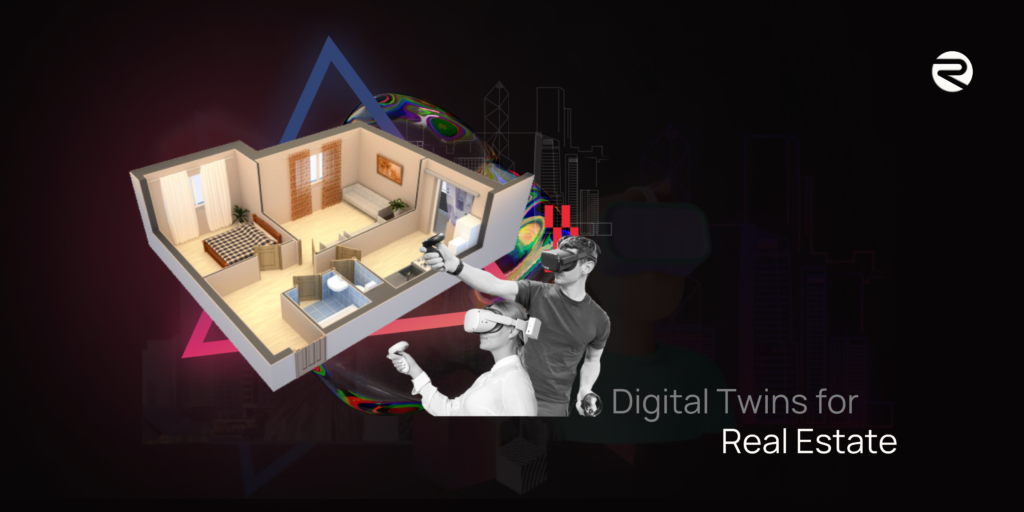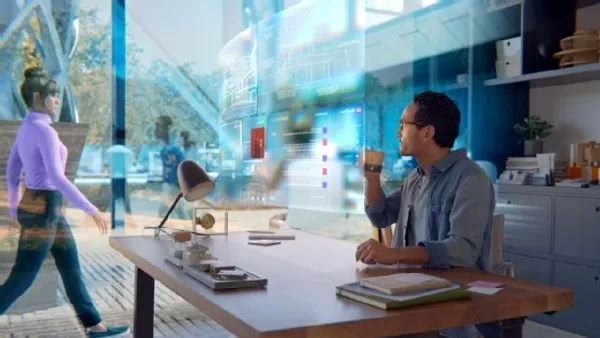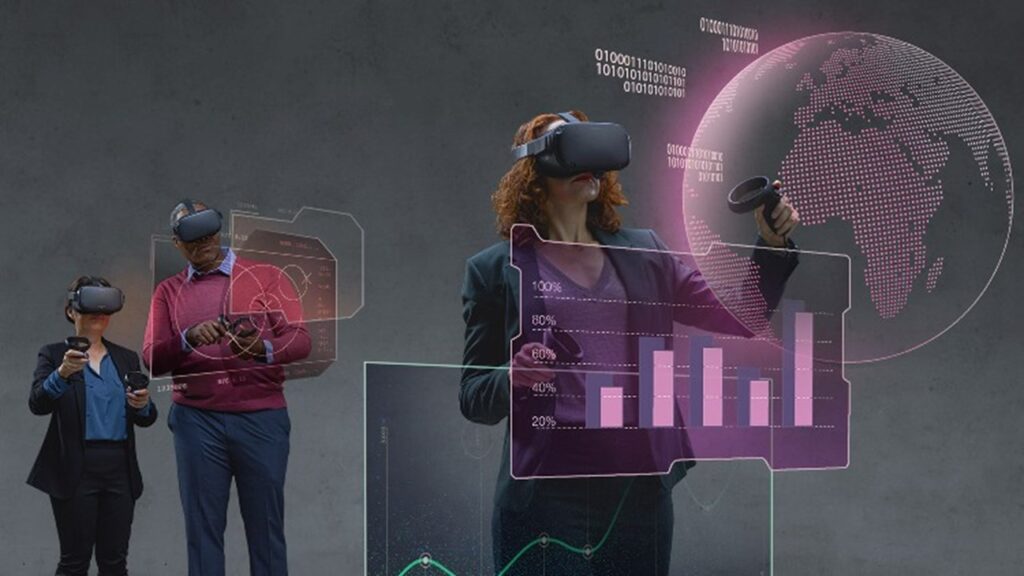Virtual Reality (VR) and digital twins are two emerging technologies that have the potential to revolutionise the Real Estate industry. While still in their early stages of development, these technologies are already being used to help architects, developers, and real estate agents create more immersive and engaging experiences for potential buyers.

What are VR and digital twins?
Virtual Reality (VR) is a technology that allows users to experience a simulated environment as if they were actually there. VR typically involves wearing a headset that tracks the user’s head and eye movements, and can also include hand-held controllers for interacting with the environment.
Digital twins, on the other hand, are digital replicas of real-world objects or systems. They are created using data from sensors and other sources, and can be used to monitor and optimize the performance of physical assets. Digital twins are often used in manufacturing and industrial settings, but they are also starting to be used in the Real Estate industry.
How can VR and digital twins help Real Estate?
One of the most significant ways that VR and digital twins can help the Real Estate industry is by providing more immersive and engaging experiences for potential buyers. VR can be used to create virtual tours of properties, allowing potential buyers to “walk through” a property and get a sense of its layout, design, and features. This can be especially useful for buyers who are unable to physically visit a property, or who live in another part of the world.
Digital twins can also be used to help buyers and sellers better understand the performance of a property. For example, a digital twin of a building can be used to monitor its energy usage, HVAC system, and other systems, providing real-time data that can be used to optimize performance and reduce costs. This can be especially useful for commercial properties, where energy costs can be a significant expense.
In addition, VR and digital twins can be used to help architects and developers design and plan properties more effectively. By creating a digital twin of a property before it is built, designers can test different design options and configurations to optimise performance and reduce costs. VR can also be used to create more engaging and interactive presentations for potential buyers, allowing them to explore different design options and visualise how the property will look and feel.

What are the challenges of using VR and digital twins in Real Estate?
While VR and digital twins offer many potential benefits for the Real Estate industry, there are also some challenges to overcome. One of the biggest challenges is the cost of implementing these technologies. Creating a high-quality digital twin or VR experience requires significant investment in hardware, software, and expertise.
Another challenge is the need for standardized data formats and protocols. In order for digital twins to be effective, they need to be able to integrate data from multiple sources, including sensors, building management systems, and other software. This requires a standardized approach to data management and interoperability, which is still in the early stages of development.
Finally, there is also a need for greater awareness and education among real estate agents, buyers, and sellers about the potential benefits of VR and digital twins. Many people may be unfamiliar with these technologies and may be hesitant to use them, which could limit their adoption and impact.
Conclusion
Despite these challenges, the potential benefits of VR and digital twins for the Real Estate industry are significant. By providing more immersive and engaging experiences for buyers, optimising performance and reducing costs for sellers, and enabling more effective design and planning for architects and developers, these technologies have the potential to transform the way the industry operates. As VR and digital twins continue to evolve and become more widely adopted, we can expect to see even more innovative applications and use cases in the future.







